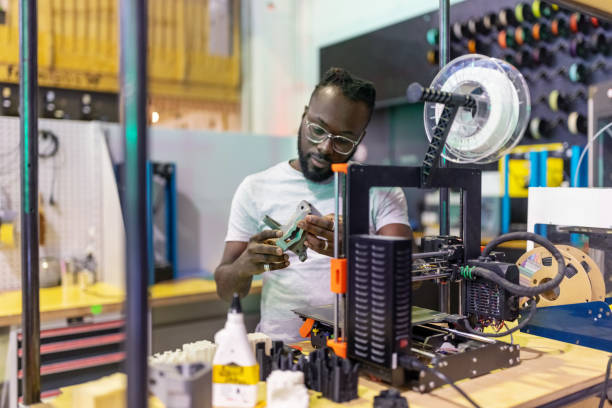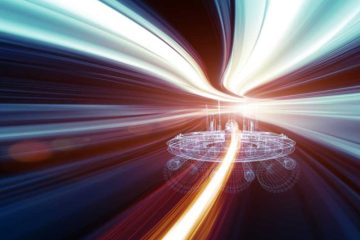Artificial intelligence (AI) has changed the operation of numerous industries and 3D printing is not an exception. An AI-Generated 3D Model For Printing Tool is a tool that utilizes artificial intelligence to convert simple text descriptions or basic sketches into highly intricate 3-dimensional models categorized and prepared for printing. One of its main uses, which is changing the design and manufacturing mode, thanks to increasing powers such as low cost printing faster products and very innovative ones.
The article covers the very reason for making an AI 3D print model generator, its real-world benefits and implications across different domains.
The Advantages of Utilizing an AI 3D Print Model Generator
1. Convenience and User-Friendliness
The ability to democratize 3D printing is one of the most significant advantages offered by an AI-powered generator for print models. Traditionally, creating such models necessitated a strong proficiency in CAD (Computer-Aided Design) software – something that can be a challenging obstacle for individuals without technical or beginner-level skills. However, thanks to this cutting-edge technology; generating comprehensive 3D designs has become increasingly easier than before—requiring only simple inputs like text descriptions from users. For instance: if you input “a vase with intricate floral patterns,” then the tool would generate a matching model right away! This simplicity makes it possible and accessible even for beginners who are interested in hobby work or educators/small business owners lacking advanced technological abilities alike- opening up broader audiences’ opportunities when it comes starting on their projects today!
2. Speed and efficiency
The process of manually creating a 3D model can be time-intensive, requiring several rounds of edits and modifications. However, an AI-powered tool for generating print models considerably expedites this task. These tools automate the initial phases of modeling, allowing designers to promptly develop and refine their creations while also minimizing the duration between concept inception and final completion. This feature is especially valuable in sectors that strongly rely on stay ahead quickly such as product design or manufacturing industries since it facilitates swift prototyping which leads to rapid innovation cycles enabling firms to remain competitive by adapting swiftly according to market needs.
3. Cost-Effectiveness
Small businesses and individual users might find it difficult to cover the expenses of skilled designers or high-cost 3D modeling software. However, they can benefit from a budget-friendly solution by utilizing an AI-powered generator for their 3D print models. These streamlined tools circumvent the need for specialized personnel and expensive software while automating model creation processes, allowing cost savings on labor and material costs associated with traditional methods. Moreover, this approach enables quick iterations in design without adding significant overheads leading to increased innovation opportunities as well as relatively lower overall project expenditures across different stages of production.
4. Improved Creativity and Innovation
The AI-based 3D printing model generators serve as a muse for novel design concepts that are beyond the scope of conventional approaches. The all-encompassing aptitude of artificial intelligence to decode various inputs impels imaginative and fresh designs, pushing creativity’s limits. With designers having an option to promptly experiment with distinct approaches and aesthetics, undertaking diversified exploration and innovation becomes seamless using this technology. This advanced feature is especially precious in disciplines centered around ingenuity like art, fashion or architecture nurturing originality amidst their deterministic environment..
5. Personalization and customization
The capacity to produce unique and tailored items is a notable benefit of 3D printing. By utilizing an AI-generated design model, the potential for customization increases as users are seamlessly able create one-of-a-kind designs that suit their distinct requirements and desires. This technology has facilitated creating bespoke jewelry pieces, perfectly fitted prosthetics, or customized decor without difficulty. Such flexibility results in heightened customer contentment and opens up fresh market horizons for businesses whose offerings prioritize individualization.
6. Enhanced precision and accuracy.
Instead of relying on the expertise and experience of designers, an AI 3D print model generator use sophisticated algorithms to attain more precise and accurate models. By scrutinizing enormous amounts of data and adopting a learning approach from millions of instances, these instruments craft refined models that meet particular standards with utmost accuracy. This improved precision minimizes errors or flaws in final printed products resulting in better quality results.
7. Scalability and Flexibility
By leveraging AI-powered 3D print model generators, users can easily modify their designs to meet evolving requirements with remarkable scalability and flexibility. From augmenting prototypes for large-scale production to fine-tuning design elements, these tools offer the versatility needed to match variable project goals effectively. This adaptability is particularly advantageous for enterprises exploring new markets or expanding product offerings as it enables them cost-effectively grow productions at scale.
Applications in Diverse Industries
Various industries can reap unique advantages from using an AI 3D print model generator, making it a beneficial technology with far-reaching benefits.
AI 3D print model generators have numerous applications in healthcare. For instance, they can be utilized to produce custom prosthetics, dental implants and surgical tools that are tailored specifically for each patient’s needs resulting in better fitment , enhanced comfort and superior functionality which ultimately contributes towards improving overall patient outcomes. Furthermore, AI technology is also capable of developing intricate anatomical models ideal for the purpose of surgical planning as well as education purposes.
The automotive and aerospace sectors heavily rely on swift prototyping and testing of novel components. The utilization of AI-powered 3D print model generators can expedite both the design and testing stages, paving the way for speedier innovation as well as more productive production procedures. Additionally, such models display remarkable precision and accuracy that guarantee superior parts meeting stringent industry regulations.
In the consumer goods industry, AI and 3D printing technology can be utilized by companies to manufacture distinctive products like eyewear, footwear or home décor. Such personalization guzzles up higher customer satisfaction which results in increased brand loyalty as consumers prefer unique and tailor-made items nowadays.
AI 3D print model generators offer a valuable opportunity for educators and students to enhance the learning experience. By creating interactive tools and visual aids, this technology can help visualize complex concepts while facilitating hands-on exploration. Additionally, it provides an accessible platform that enables learners without extensive technical training to engage with 3D printing technologies,thereby benefiting both parties in the educational process.
AI 3D print model generators are a valuable tool for architects and construction professionals to craft intricate models of buildings and structures. This technology enables enhanced visualization, planning, and communication of design concepts, bolstering collaboration between stakeholders. Moreover, implementing quick iterations on designs can foster innovative solutions that maximize building efficiency.
Conquering Obstacles and Boundaries
Although AI 3D print model generators have many benefits, they present various challenges and limitations. Solving these issues is essential to fully exploit the potential of this technology.
The efficacy of 3D print model generators powered by AI hinges on the caliber of training data employed. To guarantee precise and steadfast generation, high-quality datasets consisting of varied instances are indispensable. Consistent endeavors to sort out and enhance such training data can surmount this hurdle.
Sometimes AI-generated models may not possess the essential intricacy and elaboration needed for certain applications. However, with advancements in AI algorithms and augmented computational capabilities, this limitation can be overcome by producing more intricate and detailed models.
Accurately interpreting user inputs, be it in the form of text or sketches, is crucial for generating useful models. To enhance an AI’s interpretation capabilities and understanding ability, continuous improvements can be made to its natural language processing (NLP) and image recognition technologies.
The implementation of AI in 3D printing poses moral and legal dilemmas, particularly concerning intellectual property rights and authorship. Developing explicit directives and protocols can effectively address these issues while promoting equitable and conscientious utilization of models produced by AI technology.
The Future Prospects
There is great promise for AI-powered 3D print model generators in the future, as ongoing advancements in AI technology are poised to boost their capabilities even further. As we witness continued growth and evolution of AI, we can expect increasingly sophisticated tools that make 3D printing more accessible than ever before. The potential integration of other emerging technologies – like augmented reality (AR) and virtual reality (VR) – opens doors to exciting new applications throughout design and manufacturing sectors alike.
In addition, a heightened level of cooperation among AI developers, designers and industry experts could foster progressive ideas and produce tailored AI-generated 3D printing models that cater to diverse sectors’ precise requirements. Such mutual participation might result in specialized equipment as well as results which optimize the advantages emanating from incorporating artificial intelligence into three-dimensional printing technology.
The Final Verdict
Utilizing an AI 3D print model generator is advantageous in numerous ways, including heightened accessibility and efficiency, as well as increased creativity and customization. These tools streamline and automate the process of 3D modeling while enabling faster production of superior quality models at a lower cost. Their transformative impact on design and manufacturing has potential applications across various industries that underscore their significance.
The potential for AI 3D print model generators is promising, despite the current obstacles and restrictions. With continuous advancements on the horizon, this field is set to undergo a revolutionary transformation. As we delve deeper into utilizing AI in 3D printing technology, an even greater extent of innovation and expansion can be expected moving forward.



